Is it Okay to Fertilise Your Lawn After Mowing?
A beautiful, lush lawn is a source of pride for many homeowners. It not only adds to the aesthetics of your property, but also provides a functional space for outdoor ...

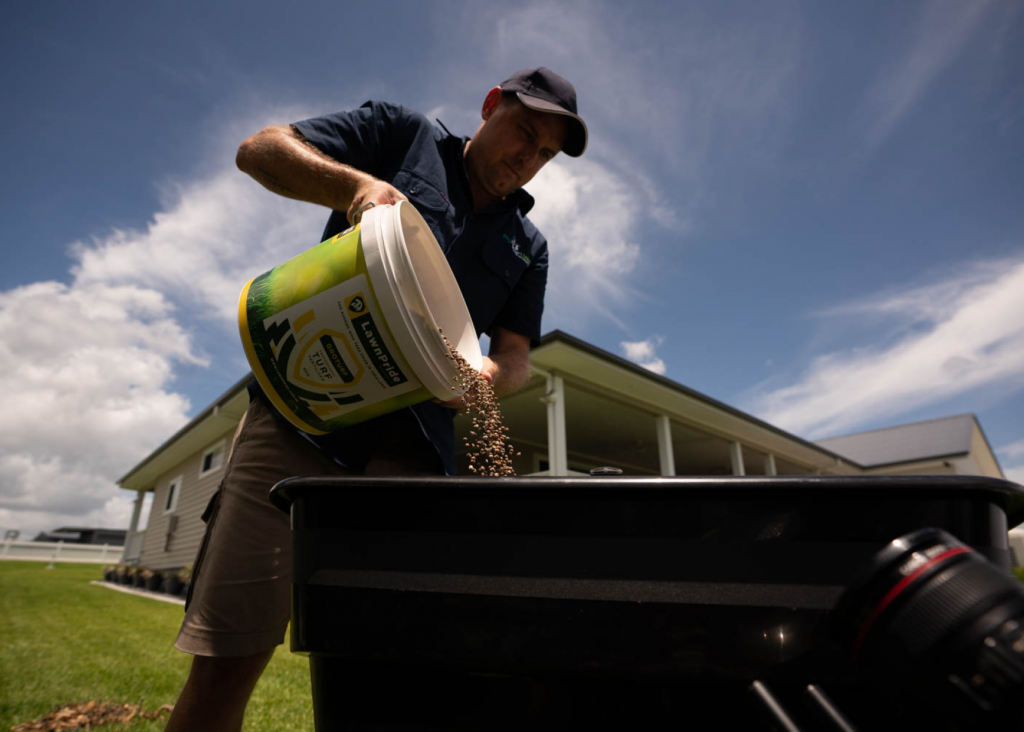 In a word, yes!
In a word, yes!
When it comes to lawns, applying too much fertiliser can be as bad as not applying enough.
As well as being a waste of time and money, excess fertiliser can damage your lawn and leach into groundwater, creeks and rivers, affecting water quality.
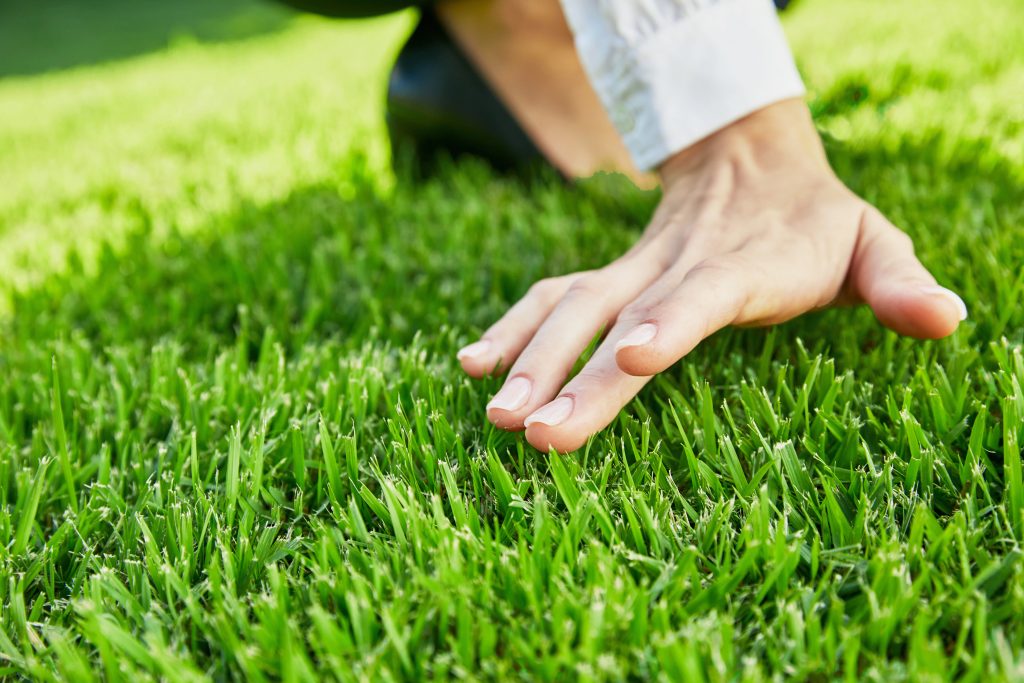 Your lawn needs the correct levels of sunlight, air, water and nutrients for good health, which gives it the strength to keep common lawn weeds and lawn pests at bay.
Your lawn needs the correct levels of sunlight, air, water and nutrients for good health, which gives it the strength to keep common lawn weeds and lawn pests at bay.
The major nutrients used by plants are nitrogen (N), phosphorous (P) and potassium (K). Trace elements are required in much smaller quantities, but deficiencies can also affect a plant’s ability to use the main nutrients.
Like all plants, your lawn draws its nutrients from the soil, so we need to apply fertiliser to replace those major nutrients (N,P & K).
It’s also important to keep your lawn’s nutrient levels in balance. Too much or too little of any element can cause problems.
Too much fertiliser can cause a sudden growth spurt by stems and leaves, but not the roots. The roots will be unable to deliver enough water and nutrients to support that growth so the lawn will turn yellow.
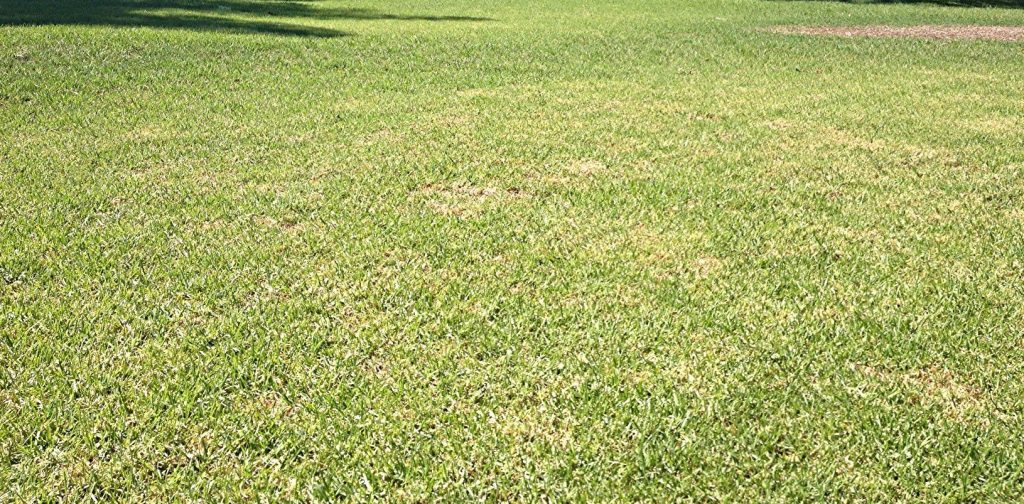 Most fertilisers are composed of mineral salts, which draw water out of the soil. In large quantities fertiliser can also do the same to lawn, causing it to dry out and turn yellow – commonly known as fertiliser burn.
Most fertilisers are composed of mineral salts, which draw water out of the soil. In large quantities fertiliser can also do the same to lawn, causing it to dry out and turn yellow – commonly known as fertiliser burn.
If you have a dog, you might also notice small patches of lawn that are a darker green and grow faster than the rest or turn yellow.
Dog urine is high in nitrogen, and can be concentrated enough to burn your lawn, just as applying too much fertiliser will.
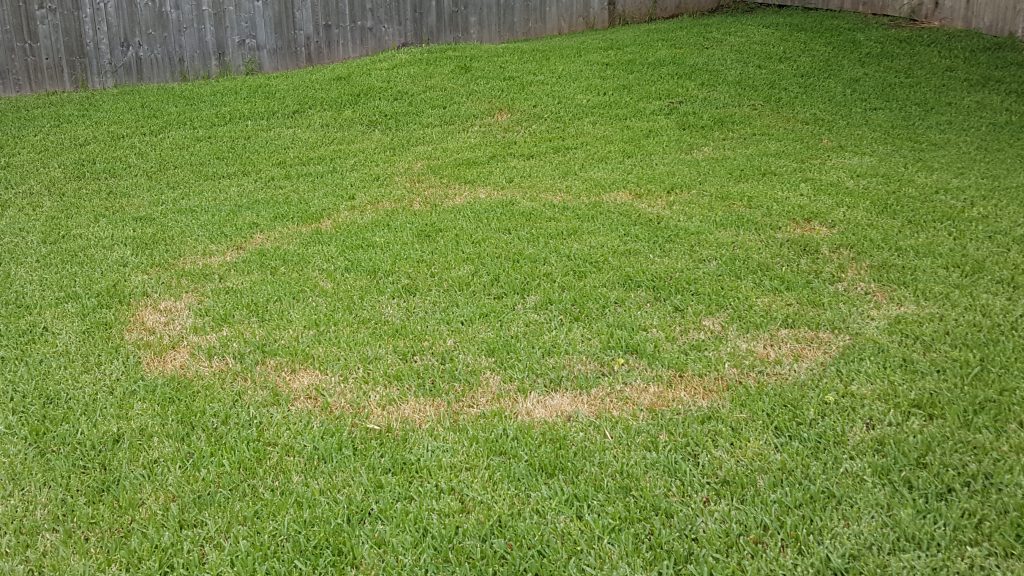 Surprisingly, some of the symptoms of an over fertilised lawn are similar to the signs of deficiency.
Surprisingly, some of the symptoms of an over fertilised lawn are similar to the signs of deficiency.
The damage might be limited to a small area, or it can cover a large area if you’ve accidentally overlapped when spreading fertiliser.
Symptoms of an over fertilised lawn include:
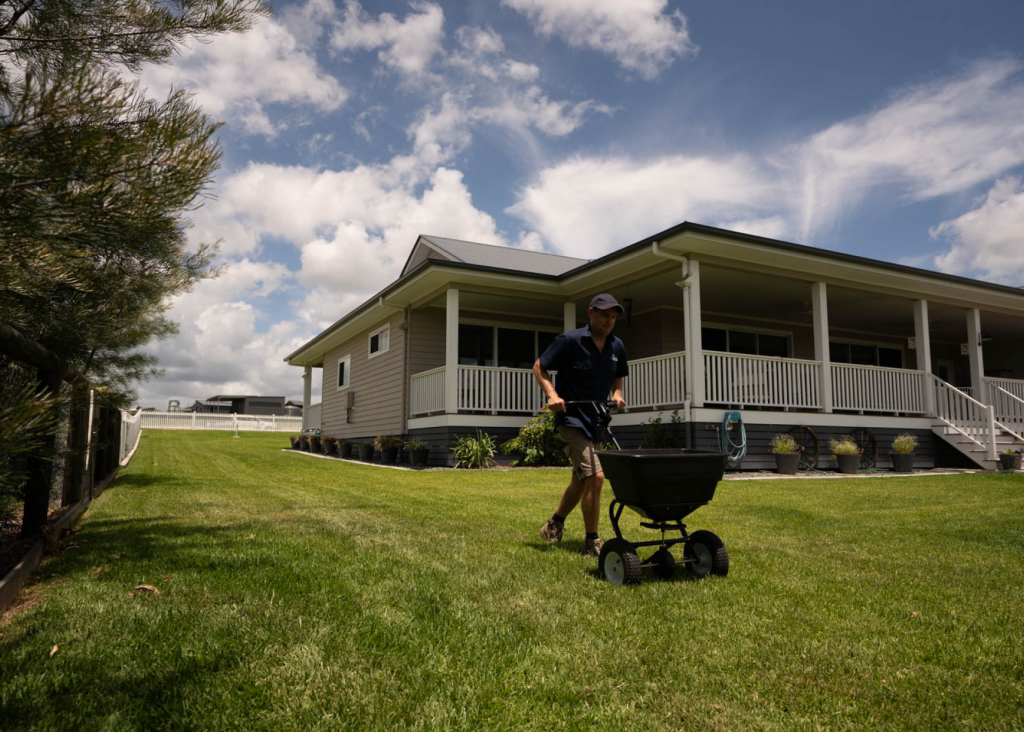 Always monitor your lawn after applying fertiliser and keep an eye out for signs of trouble.
Always monitor your lawn after applying fertiliser and keep an eye out for signs of trouble.
It is possible to fix an over fertilised lawn, but prompt action is needed.
If the lawn is yellow but not dry, it should grow back. If it’s brown and brittle it won’t. Check the roots in a few different spots to see if they’re healthy (good) or black (bad).
If the damage is superficial, watering the lawn until it’s saturated can be enough to dilute the fertiliser, wash it into the soil and get your lawn looking green again.
Make sure the water goes on slowly but deeply to prevent runoff, and water the whole lawn, not just the affected patches.
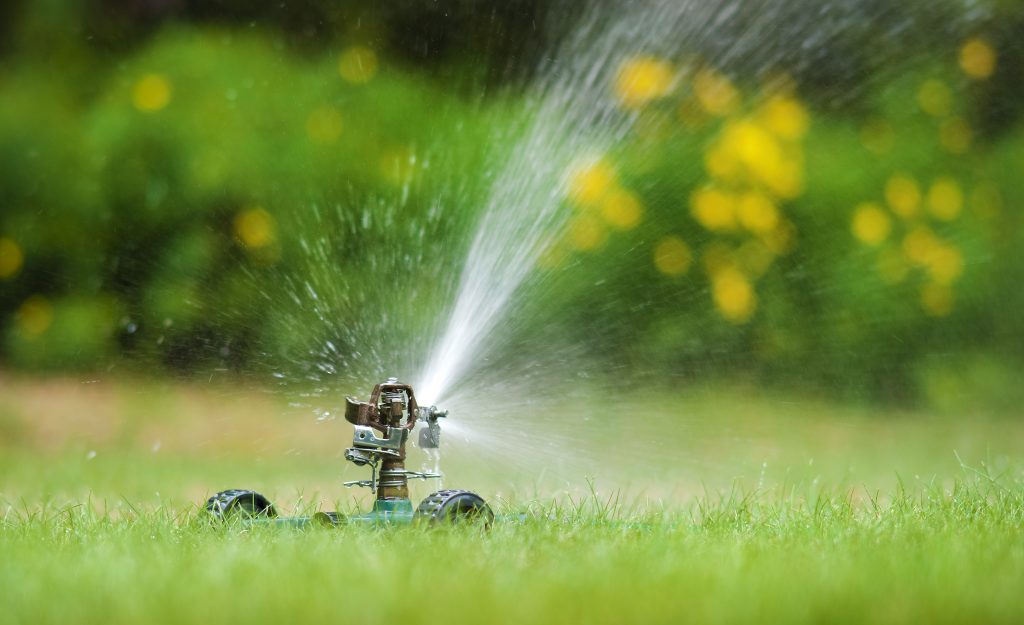 Then water every morning for a week, applying the equivalent of 2.5cm of water each time.
Then water every morning for a week, applying the equivalent of 2.5cm of water each time.
The lawn should start to recover within a week or two. If it doesn’t, you’ll need to repair the dead patches.
If you’re not sure about the best way to repair dead or bare spots in your lawn, read our article “How to repair a hard lawn“.
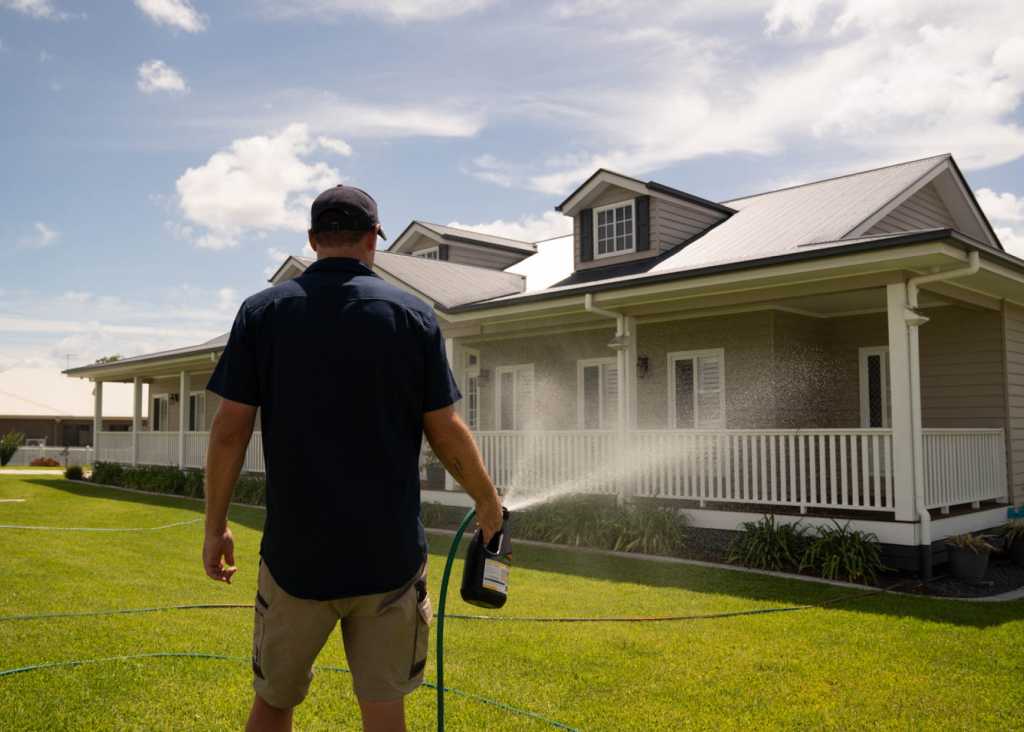
Fertiliser recommendations for lawns can be confusing to the average homeowner.
It depends on the type of fertiliser you are using. For example are you are using slow release, granualar or hose on fertiliser?
To help you navigate the world of fertiliser application we have created some easy steps:
 Always read the safety directions and instructions on the product label before use. Wear safety glasses and gloves to avoid irritation from skin and eye contact.
Always read the safety directions and instructions on the product label before use. Wear safety glasses and gloves to avoid irritation from skin and eye contact.
A slow-release fertiliser is less likely to cause burning. If you use granules rather than powder or liquid, you’ll be able to see where you’ve put it and avoid overlaps.
If you use a liquid fertiliser and are concerned about adding too much, using a specialised non-staining liquid spray, such as Blazon Blue Spray Indicator 1L, indicates areas of your lawn that have already been sprayed.
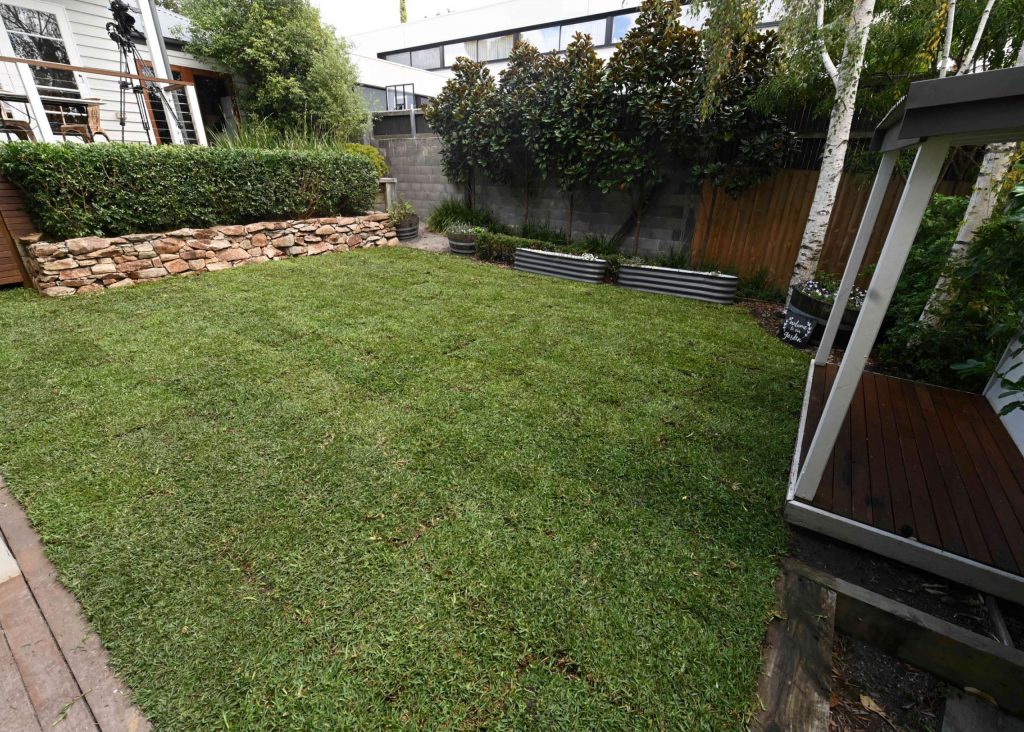 To avoid burning your lawn, don’t apply fertiliser to wet grass or within two weeks of spreading lime, and thoroughly irrigate after each application.
To avoid burning your lawn, don’t apply fertiliser to wet grass or within two weeks of spreading lime, and thoroughly irrigate after each application.
Finally, fertilise your lawn no more than three times a year – spring, summer and autumn.
If you’re not sure about your fertiliser program, read The Concise Lawn Fertiliser Guide.
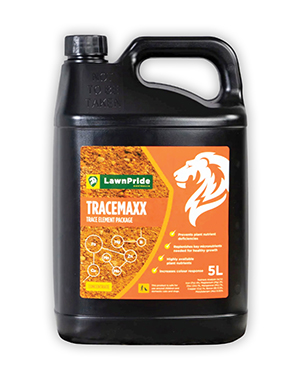
LawnPride TraceMaxx 5L Concentrate provides a complete package of the 9 essential Trace Element nutrients that aid in preventing plant nutrient deficiencies. Suitable for Zoysia, Kikuyu, Couch and Buffalo grasses. Always read the safety directions and instructions on the product label before use.
SHOP NOW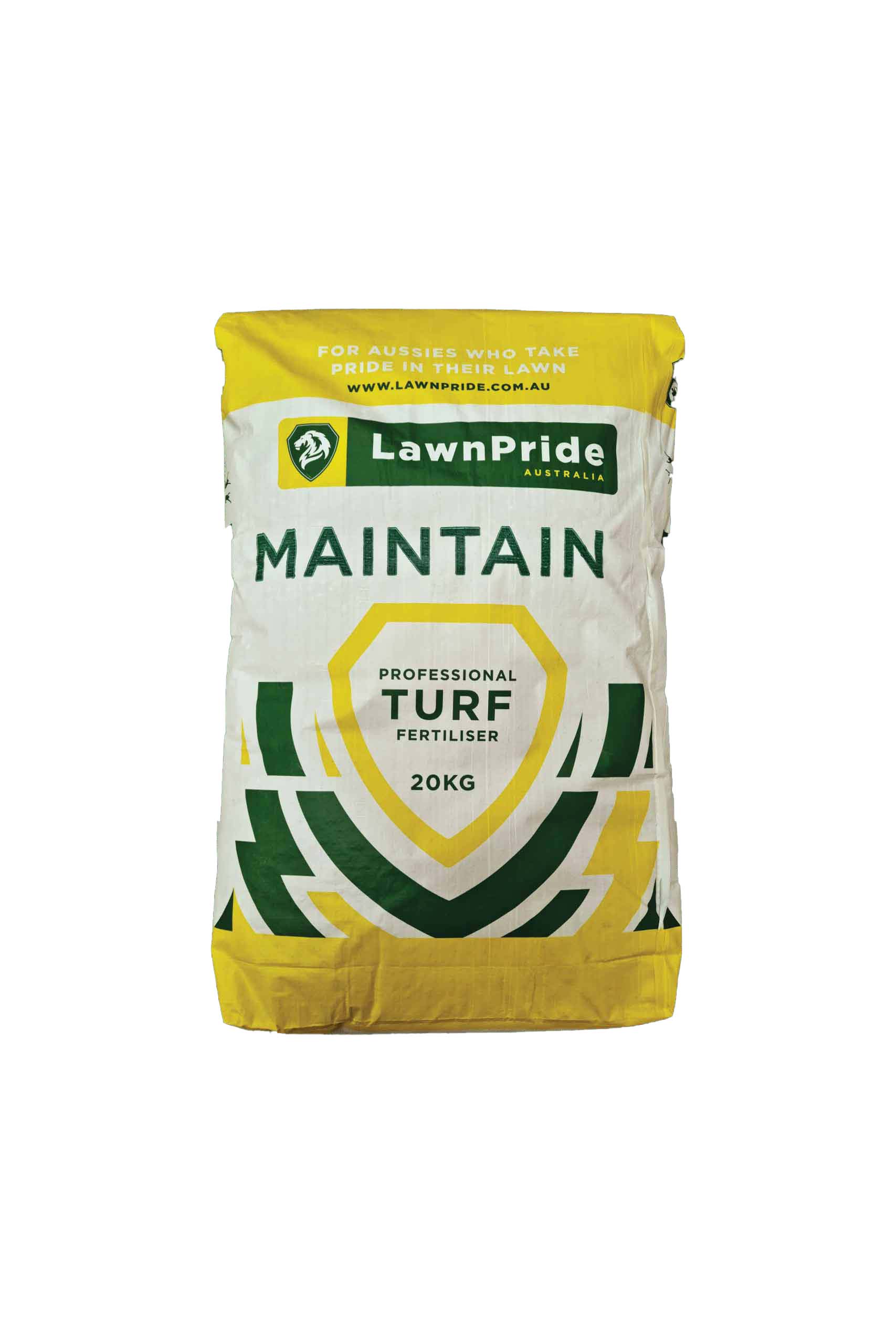
Lawn Pride Maintain 26-2-9 + 3.4 Fe 20kg is one of the most popular granular all-round lawn fertilisers on the market with the active ingredients of Nitrogen (N – 26), Phosphorus (P – 2), Potassium(K – 9) and Iron (Fe – 3.4). Suitable for Zoysia, Kikuyu, Couch and Buffalo grasses. Always read the safety directions and instructions on the product label before use.
SHOP NOW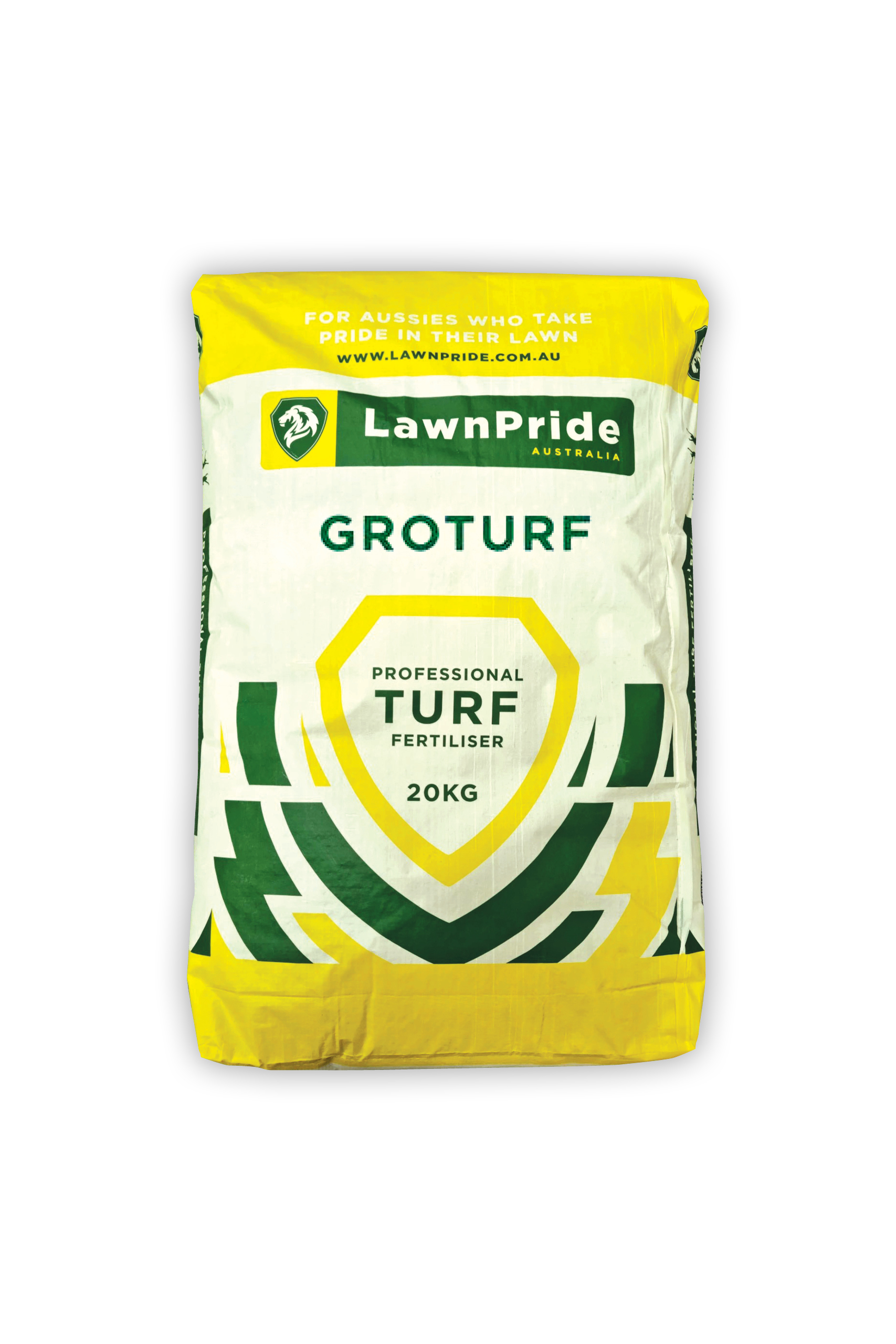
LawnPride Groturf 15-4-11 + Traces 20kg is an instant release granular fertiliser designed to initiate rapid growth of your lawn thanks to extra trace elements that build up your soil’s nutrients. Suitable for Zoysia, Kikuyu, Couch and Buffalo grasses. Always read the safety directions and instructions on the product label before use.
SHOP NOW